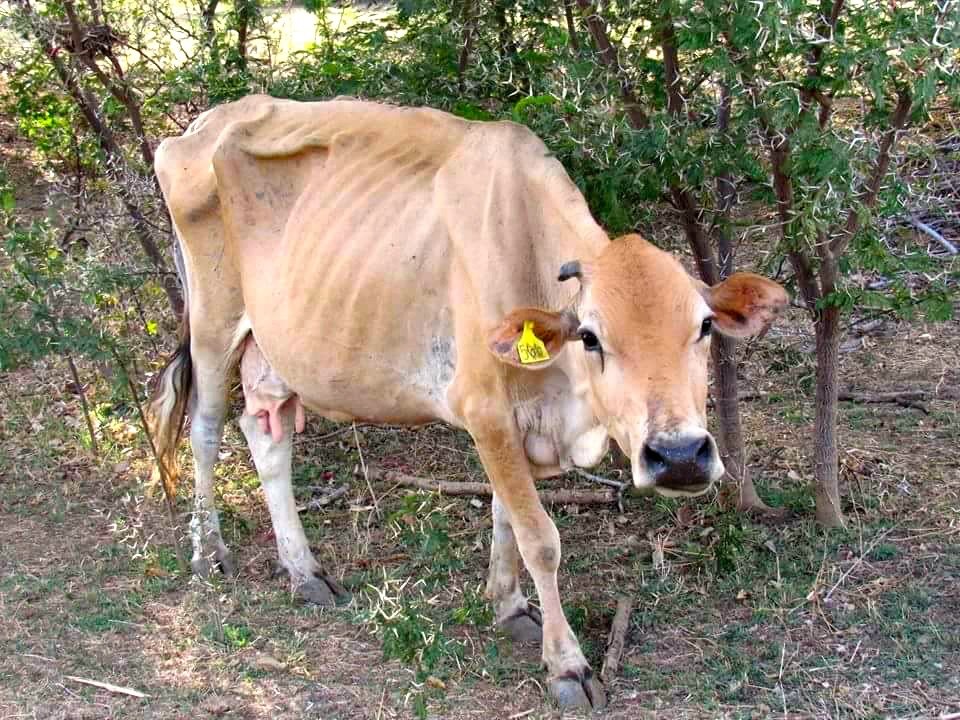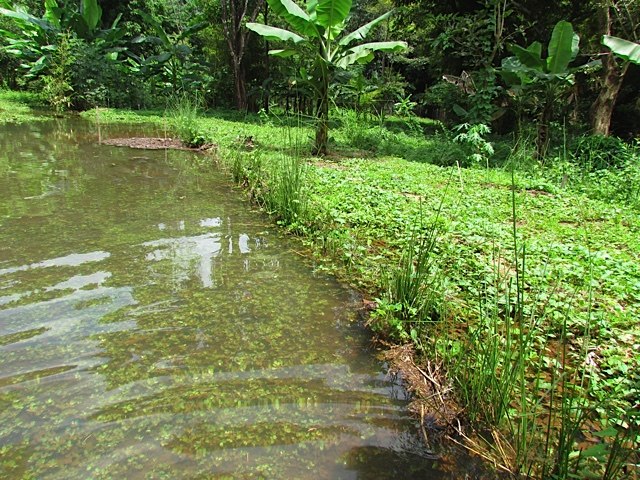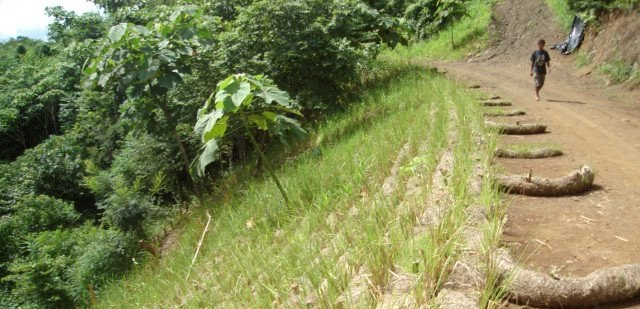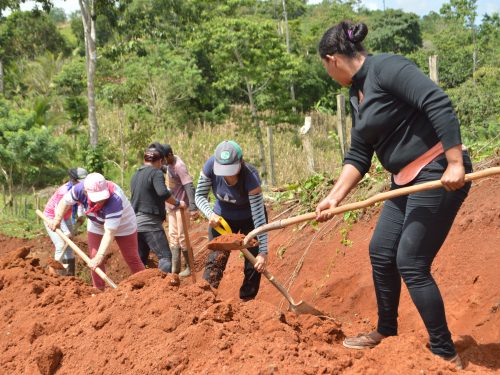
“Only when the well runs dry do we know the value of water”- Benjamin Franklin
Twenty-some years ago, when I was seeking out where to live happily ever after, I picked Paraiso in Guanacaste.. I actually wanted to live and work in an area with seasonal water challenges, like my native Southern California. Being a novice devotee of the land management practices in the Permaculture movement, I was convinced that there were all kinds of neat things that would help remediate regional water issues and let me feel like I was contributing in some small way to addressing global problems at the local level.
Now, with the current drought, after almost 11 months of irrigation and the sound of air bubbles from the pump in the well, I wonder sometimes if I bit off more than I can chew.

Photo by Amalia Jiménez. The rain fall average in the province of Guanacaste during 2015 was between 40 to 60% less than normal, producing less food and water for animals.
The Known Problem: Water, Development and Sustainability
During the war in Iraq, one of the luminaries of the Bush administration sagely uttered:
“There are known knowns. These are things we know that we know. There are known unknowns. That is to say, there are things that we know we don’t know. But there are also unknown unknowns. These are things we don’t know we don’t know.”
When you see a line of tanker trucks clogging the main thoroughfare of a bustling tourist town by the bay, at the height of the busy season, with peak demand for water, you know you have a problem.
When the wells start sucking salt water into the underground aquifer that supplies said city with the wherewithal to wash up, hose down, do the laundry and keep the cash registers ringing, ditto, you know you’ve got a problem.
Now it turns out, there are in fact a few problems with problems. One is that not everybody recognizes there is in fact a problem.
As the writer Upton Sinclair wryly noted, “It is difficult to get a man to understand something, when his salary depends on his not understanding it” (like recent revelations about Exxon having thoroughly studied, understood and then covered up what they knew about fossil fuels and climate change since the ‘80s.)
On the local front, the head in the sand is regarding the problemita of the ‘viability’ of the aquifer that is supposed to quench the growing thirst of Tamarindo and environs would belong to the Municipality of Santa Cruz. But building permits generate fees, increased property values generate increased tax revenues.
The Known Unknown: Give It a Rest
As I understand it, SENARA, the national water authority, recommended suspending the issuance of building permits. You know, like don’t put more straws into the margarita when you’re already sucking bubbles. They want to give the aquifer a ‘rest’, and hope that it recovers a bit.
OK, typically after an El Niño period, we do get a resumption of more normal rainfall and subsequent groundwater recharge. But, in the face of an agreed upon ”drying out” of our area due to climate change, the “known unknown” is just how much that period of rest for the aquifer is akin to the doctor telling you to take two aspirin and call him in the morning.
As luck would have it, just a few days ago I got a firsthand look at an example of what kind of “development” the Municipality of Santa Cruz is rubber stamping in order to keep its own coffers flush while at the same time, undermining any future replenishment of the aquifers in our area.
I had to downshift into first gear as I crawled up the cement-covered incline high in the hills of the hundred-lot development just outside Villareal. The good news: the owners of a house under construction were planting deep-rooted vetiver grass to ensure that their dream home stayed put on its pad notched high up into the hillside. The bad news: Some people are completely clueless when it comes to the whole concept of best management practices in terms of rainfall management, especially in times of scarcity and depletion of aquifers.

Raised bump to spread out stream water during storm events allowing it to percolate into the soil rather than rushing out to the ocean. It also captures organic debris and soil that is eroding from higher up in the hills.
The Unknown Unknowns: Runoff Models and Watershed Restoration
Our local watershed project recently had a chance to wash away these “unknown unknowns” for students from La Paz Community School. Using a simple runoff model of angled, impermeable zinc sheeting, and a series of differently permeable surfaces, they were able to both observe and measure the infiltration of water and the amount of time it takes to work its way through the soil, downhill and into the aquifers and streams of any valley. It’s not rocket science.
The rainfall infiltrating up in the hills, as it does under a healthy stand of vegetation, works its way slowly down through the soil layers into the streams and into the vast lakes of underground water that we call aquifers. If you pave over the hills, as the students at La Paz School can explain to you, less water goes in, more runs off immediately, the streams dry up sooner in the year and the recharge of the aquifer is reduced. Furthermore, when infiltration is optimum, all those tons of water stored high up in the hills, help to generate the “hydrostatic pressure” under the ground that keeps the salt water from getting sucked into the wells.
Politicians and assorted regional movers and shakers propose solutions for our local water crisis that run the gamut from a Chinese offer to provide desalinization plants, a ban on golf courses, robbing water from other aquifers and a sort of “grand canal” to bring more water from a new dam somewhere over by Bagaces but, responses to the emergency based on short-term thinking often lead to worse problems over the long haul.
Completely off the radar, firmly encoded in the collective “unknown unknowns” of the powers that be, would appear to be the range of techniques of what is known as watershed restoration. These techniques have successful track records, often in much drier areas of the world: Rivers “reborn” in India, semi arid wasteland in China recuperated for productive agriculture, 35 million hectares in Ethiopia restored to form the base of a flourishing agricultural economy, beavers swimming back into formerly dried up streams in Arizona.
We just need to slow it down, spread it out and sink it in” and pay heed to some ancient, Eastern wisdom:
“To protect your rivers, protect your mountains.” — Emperor Yu
Tom Peifer is an ecological land use consultant with 20 years experience in Guanacaste.







Comments